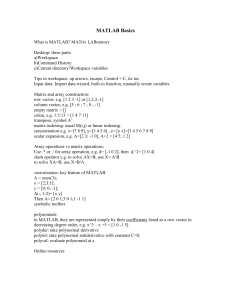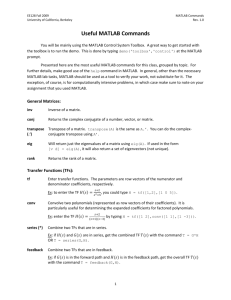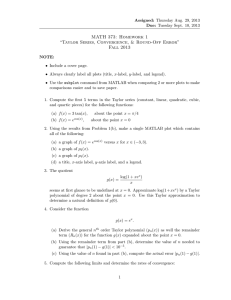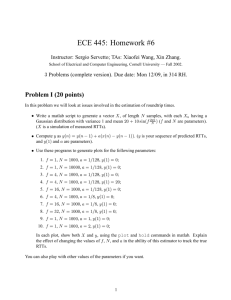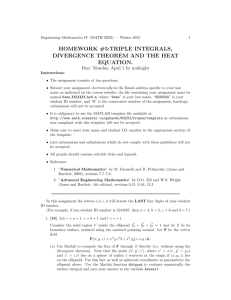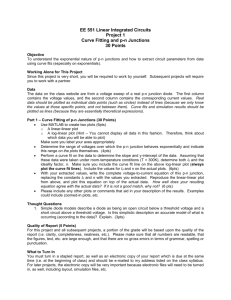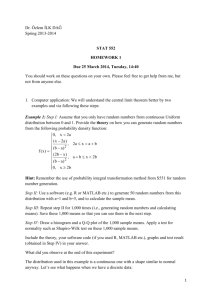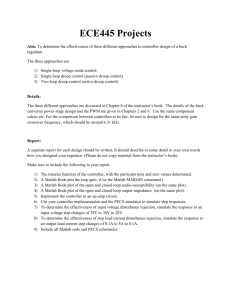MATLAB Basics
advertisement
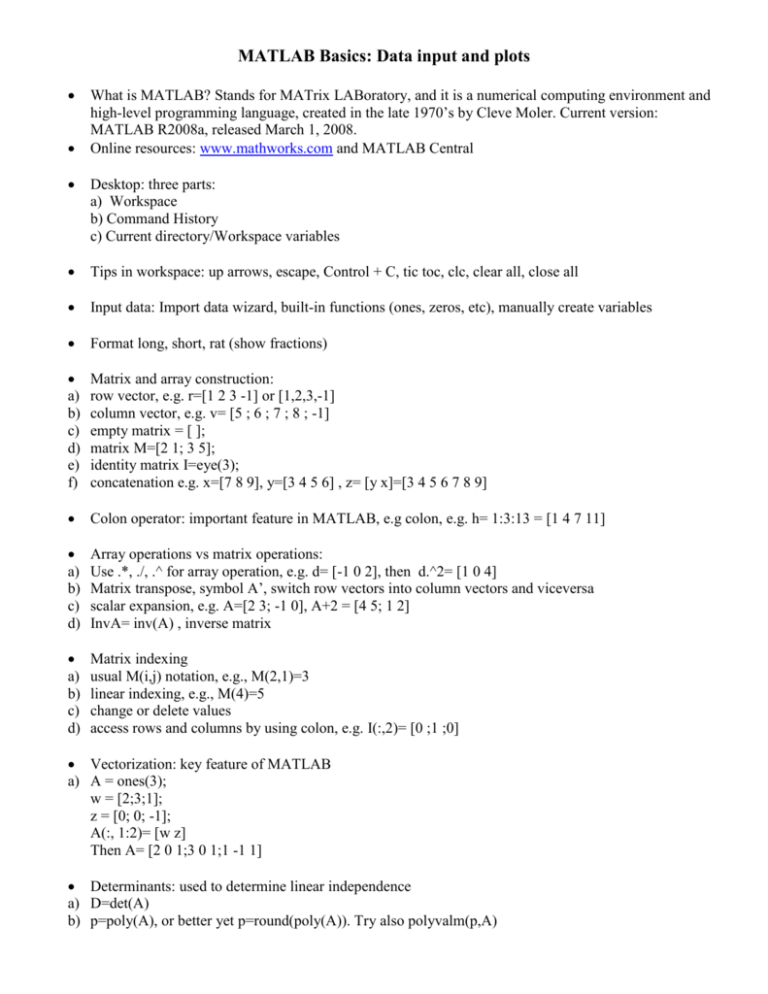
MATLAB Basics: Data input and plots
What is MATLAB? Stands for MATrix LABoratory, and it is a numerical computing environment and
high-level programming language, created in the late 1970’s by Cleve Moler. Current version:
MATLAB R2008a, released March 1, 2008.
Online resources: www.mathworks.com and MATLAB Central
Desktop: three parts:
a) Workspace
b) Command History
c) Current directory/Workspace variables
Tips in workspace: up arrows, escape, Control + C, tic toc, clc, clear all, close all
Input data: Import data wizard, built-in functions (ones, zeros, etc), manually create variables
Format long, short, rat (show fractions)
a)
b)
c)
d)
e)
f)
Matrix and array construction:
row vector, e.g. r=[1 2 3 -1] or [1,2,3,-1]
column vector, e.g. v= [5 ; 6 ; 7 ; 8 ; -1]
empty matrix = [ ];
matrix M=[2 1; 3 5];
identity matrix I=eye(3);
concatenation e.g. x=[7 8 9], y=[3 4 5 6] , z= [y x]=[3 4 5 6 7 8 9]
Colon operator: important feature in MATLAB, e.g colon, e.g. h= 1:3:13 = [1 4 7 11]
a)
b)
c)
d)
Array operations vs matrix operations:
Use .*, ./, .^ for array operation, e.g. d= [-1 0 2], then d.^2= [1 0 4]
Matrix transpose, symbol A’, switch row vectors into column vectors and viceversa
scalar expansion, e.g. A=[2 3; -1 0], A+2 = [4 5; 1 2]
InvA= inv(A) , inverse matrix
a)
b)
c)
d)
Matrix indexing
usual M(i,j) notation, e.g., M(2,1)=3
linear indexing, e.g., M(4)=5
change or delete values
access rows and columns by using colon, e.g. I(:,2)= [0 ;1 ;0]
Vectorization: key feature of MATLAB
a) A = ones(3);
w = [2;3;1];
z = [0; 0; -1];
A(:, 1:2)= [w z]
Then A= [2 0 1;3 0 1;1 -1 1]
Determinants: used to determine linear independence
a) D=det(A)
b) p=poly(A), or better yet p=round(poly(A)). Try also polyvalm(p,A)
Linear system solvers: the slash and backslash operators
a) To solve AX=B, use X= A\B
b) to solve XA=B, use X=B/A
Then inv(V)*A= V\A and A*inv(V)=A/V in MATLAB.
Matrix inverses: inv(A) involves a lot of computational time, memory and it is very sensitive to round off
error.
Eigenvalues and eigenvectors:
a) [V,D] = eig(A) returns in the matrix V the matrix of normalized eigenvectors and matrix D is the
diagonal matrix whose diagonal contains the eigenvalues of A. If A is diagonalizable, then A =
V*D*inv(V) or A=V*D/V.
b) Eigenvalue visualization : Eigshow, try [1 -1; 0 -1], [1 -1; 1 1]
Plots:
a) z=0:0.01:1;
zsquare=z.^2;
plot(z,zsquare)
plot(z,zsquare,’or’)
title('x^2 in the interval [0 ,1]')
legend('x^2')
xlabel('x axis')
ylabel('y axis')
Color
b
y
m
c
r
g
blue
yellow
magenta
cyan
red
green
A few options for plot command
Marker type
.
o
x
+
*
s
d
point
circle
x mark
plus sign
star
square
diamond
Line
-
solid
:
dotted
-. dash dotted
-dashed
Several plots in the same window
znozero=z(2:end);
subplot(2,2,1); plot(z,z.^2); title('second power');
subplot(2,2,2); plot(z,z.^3); title('third power');
subplot(2,2,3); plot(z, z.^4); title('fourth power');
subplot(2,2,4); plot(znozero, znozero.*sin(1 ./ znozero)); title('fun function');
3-D plots
a) Curves
t=-10:0.01:2;
plot3(cos(t), sin(t),t)
b) Surfaces and contour plots
x=-2:0.05:2; y=x;
[X, Y]= meshgrid(x,y); %creates grid for function evaluation
Z=X.^2+Y.^2; surfc(X,Y,Z) What figure do you get? Try also Z=X.^2-Y.^2.
Also W=Z.^(1/2);surfc(X,Y,W)
